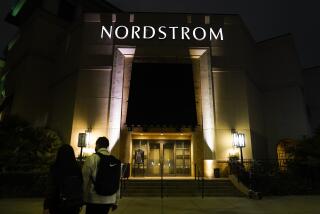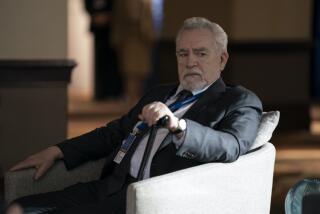Bausch & Lomb CEO Steps Down
ROCHESTER, N.Y. — Bausch & Lomb Inc.’s chief executive, William Carpenter, resigned Tuesday and was replaced by William Waltrip, the man he succeeded at the eye-care company’s helm in 1997.
Carpenter said he was leaving for personal reasons, but his departure comes as the company is seeing slowing demand for contact lenses and laser eye surgery equipment.
“For myself, I’m looking forward to spending more time with my family and utilizing my talents in new directions,” he said. “For Bausch & Lomb and its terrific employees, I have every confidence that the vision we’ve developed together will be realized.”
Waltrip said the board of directors, on which he has served since 1985, is looking outside the company for a new chief executive. Both Waltrip and Carpenter declined to be interviewed.
Waltrip was rehired as chairman in July on the same day the company posted an 80% drop in second-quarter profit. At the time, the company said Waltrip was returning to allow Carpenter to focus on business operations and would be responsible for communicating with investors about the company’s long-term strategy.
Waltrip was chairman and chief executive in 1996. Carpenter succeeded him as CEO in January 1997 and added the chairman’s title when Waltrip retired in 1999.
Under Carpenter, Bausch & Lomb sold its sunglass, animal research and hearing-aid businesses in 1999 to refocus on eye care--contact lenses, ophthalmic drugs and eye surgery instruments.
In his most dramatic move, Carpenter gave the go-ahead in April 1999 to sell its premium eye-wear business--maker of Ray-Ban, Revo, Liz Claiborne and Killer Loop sunglasses--it had built since the 1920s to Italy’s Luxottica Group, owner of the LensCrafters retail chain, for $640 million.
But troubles began building at the end of last year when demand for laser vision-correction machines dipped in tandem with a deceleration in the U.S. economy. Strong sales of newer planned-replacement lenses also have been more than offset this year by a sharp drop in demand for older-style lenses.
In October and January, the company targeted 800 job cuts, or nearly 7%, of its payroll of 12,000. It aims to trim $20 million in costs this year and $40 million a year starting in 2002.
In 1998, Bausch & Lomb wrapped up a three-year restructuring aimed at trimming $100 million in costs and eliminating 1,900 jobs to counter setbacks in the contact-lens and sunglasses markets. More than 1,200 employees were laid off when it closed sunglass plants in Oakland, Md.; Bloomfield, Colo.; and Rochester in 1996 and 1997.
Bausch & Lomb shares rose $2.06, or 5.6%, to close at $38.43 on the New York Stock Exchange.
More to Read
Inside the business of entertainment
The Wide Shot brings you news, analysis and insights on everything from streaming wars to production — and what it all means for the future.
You may occasionally receive promotional content from the Los Angeles Times.










